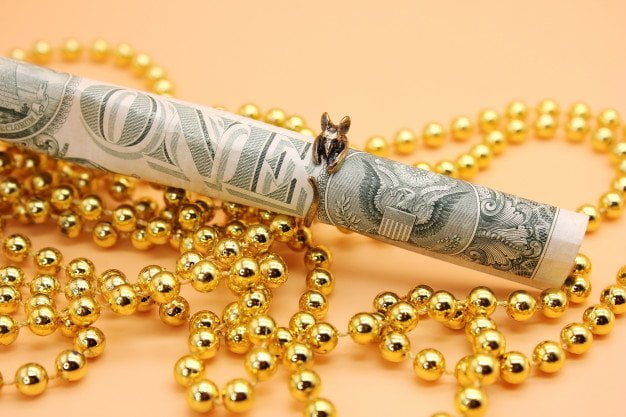Take Control of Your Finances With U.S. Money Reserve
by Mashum Mollah Finance 29 March 2020

In uncertain times, Americans often rely on savings, however meager, to weather the storm. One way that people deal with uncertainty is by building a nest egg through options like stocks, bonds, or purchasing precious metals. Buying precious metals is one way that people in the U.S. and around the world have prepared for emergencies and for the future for hundreds of years.
Purchasing precious metals, especially gold, from U.S. Money Reserve ensures that you maintain control of your financial future. Instead of relying heavily on the health of the stock market, you take your fiscal future into your own hands by diversifying your portfolio. While different portfolio diversification options include their own set of risks, purchasing gold is often viewed by experts as a risk worth taking.
Reuben Gregg Brewer of The Motley Fool puts it simply, stating that buyers of “physical gold include individuals, central banks, and, more recently, exchange-traded funds that purchase gold on behalf of others.” He also says that “gold is often viewed as a ‘safe-haven’ asset.
“If paper money were to suddenly become worthless, the world would have to fall back on something [valuable] to facilitate trade,” says Brewer. “This is one of the reasons that investors tend to push up the price of gold when financial markets are volatile.”
Why Gold?
Even in economic downturns, gold has a history of gaining profit potential. By trusting U.S. Money Reserve with your safety net, you are taking a much smaller risk with your purchase. Gold has, as Brewer points out, proven to do well even in bear markets.
Brewer explains how well gold fared during the Great Recession: “Between November 30, 2007, and June 1, 2009, the S&P 500 index fell 36 percent. The price of gold, on the other hand, rose 25 percent,” he says. “This is the most recent example of a material and prolonged stock downturn, but it’s also a particularly dramatic one because, at the time, there were very real concerns about the viability of the global financial system.” When markets experience high levels of turmoil and uncertainty, buyers rely on safe-haven assets.
Save for What Really Matters
Creating savings does not have to be solely about emergencies. There are plenty of milestones that require some form of monetary safeguard. Parenthood is the go-to example for this kind of fiscal responsibility. The Consumer Expenditures Survey notes that, in 2015 alone, a middle-class family spent nearly $13,000 on each child. From birth to adulthood, that averages to about $233,610, without allowing for inflation.
Working with U.S. Money Reserve to diversify with gold early in a child’s life could alleviate some of the later costs like college. According to U.S. Money Reserve CEO Angela Roberts, “If a new parent bought gold in 2001, they would have seen it grow from around $285/oz. to over $1,500/oz. by the time their child started college” in the fall of 2019.
That gold purchased during the child’s infancy would have increased in price fivefold just in time to handle college or other living expenses. As Roberts points out, the college has increased in cost of more than 25 percent in the last decade. In this case, purchasing gold would have been extremely profitable for the hypothetical family. Even during the worst recession in U.S. history, the purchase would have retained or increased its profit potential.
Diversify Your Savings for Your Future
Diversification is an excellent idea even in the best financial markets, but diversifying with gold is a different beast altogether. Luke Graham of CityAM refers to this kind of diversification as “hedging risk” in one’s overall fiscal portfolio.
“According to the World Gold Council, holding between 2 percent and 10 percent in gold in an average…portfolio over the past decade would have produced higher returns than none at all, so picking between these levels is a good rule of thumb, depending on how much risk you want to protect against,” Graham writes.
Graham, like Brewer, refers to gold as a “safe-haven” asset, particularly during uncertain economic times. Experts consider gold a safe haven because, historically, it has retained its market value despite world market downturns.
Kimberly Amadeo at The Balance refers to gold as an “integral” part of a diversified portfolio that should be included among other hard assets like oil and mining. “It has a long history as the first form of money,” she writes. “It then became the base for the gold standard, which set the [market] value for all money. For this reason, gold confers familiarity. It creates a feeling of safety as a source of money that will always have [profit potential], no matter what.”
About U.S. Money Reserve
U.S. Money Reserve is one of the largest distributors of U.S. government-issued coins. The company has helped hundreds of thousands of people make decisions about owning gold, silver, and platinum—to the tune of over 525,000 clients to date.
Follow U.S. Money Reserve on Twitter
Read Also:



































































































